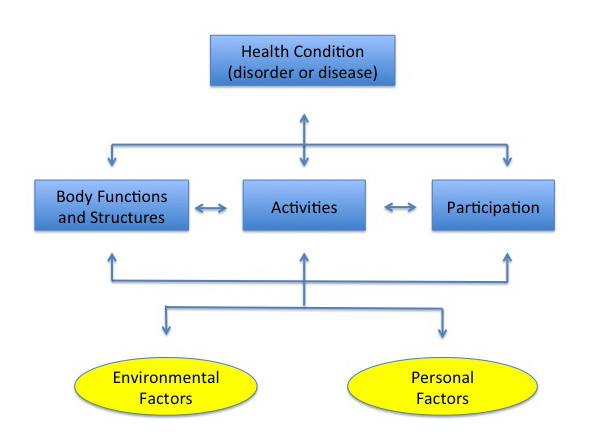Language in Mind: An Introduction to Psycholinguistics. Sinauer Associates: Sunderland, MA. This brightly colored textbook is designed to be accessible to students with no prior exposure to linguistics or psycholinguistics. An engaging and impressively comprehensive view of psycholinguistics that will provide an excellent introduction for the novice reader, and inform the advanced reader as well. Brief Introduction to Psycholinguistics 1. Iqra Abadullah(4362) Dept: Applied Linguistics BS 5th GC University Faisalabad 2. Psycholinguistics 1An Introduction 2Acquisition 3Production 4Comprehension 3. NEUROLINGUISTICS Neurolinguistics is an old term for psycholinguistics. Crocker Introduction to Psycholinguistics 3 Sentence Processing Sentence processing is the means by which the words of an utterance are combined to. Introduction to psycholinguistics 1. A Muhammadiyah University of Purwokerto 2. Psycholinguistics is the study of the language processing mechanisms. Introduction to psycholinguistics: understanding language science. [Matthew J Traxler This textbook offers a cutting edge introduction to psycholinguistics, exploring the cognitive processes underlying language acquisition and use. Provides a stepbystep tour through language. Unit One An Introduction to Psycholinguistics 1. An interdisciplinary science A processoriented science A cognitive science An empirical science 2. The Components of Psycholinguistics Developmental psycholinguistics How language is acquired during development. Psycholinguistics or psychology of language is the study of the interrelation between linguistic factors and psychological aspects. It also studies psychological and neurobiological factors that enable humans to acquire, use, comprehend and produce language. This textbook offers a cutting edge introduction to psycholinguistics, exploring the cognitive processes underlying language acquisition and use. Provides a stepbystep tour through language acquisition, production, and comprehension, from the word. Psycholinguistics is the study of language with reference to human psychology. It has a very broad scope but is frequently used with specific reference to processes of language acquisition, especially of one's first language. In the more general psycholinguistics covers the The hybrid name psycholinguistics reflects a truly interdisciplinary endeavour: Linguists are engaged in the formal description of language, psycholinguists attempt to discover how the underlying. Formative Test IV for Introduction to Psycholinguistics January 25th, 2013 Time: 90 minutes 1. Explain the milestones in acquiring first language for most children. introduction to psycholinguistics Download introduction to psycholinguistics or read online here in PDF or EPUB. Please click button to get introduction to psycholinguistics book now. All books are in clear copy here, and all files are secure so don't worry about it. Traxler's introduction to Psycholinguistics latest book offers an up to date analysis of the psychological processes that enable humans to use language as one of the primary means of communication. Introduction to psycholinguistics. This course is part of the programme: Cognitive science of language Third Level. The course provides an overview of and aims to establish a necessary level of knowledge in this research area. Introduction to Psycholinguistics: Understanding Language Science Ebook written by Matthew J. Read this book using Google Play Books app on your PC, android, iOS devices. Download for offline reading, highlight, bookmark or take notes while you read Introduction to Psycholinguistics: Understanding Language Science. Introducing Psycholinguistics is a textbook published in 2012 by Cambridge University Press in their series Cambridge Introductions to Language and Linguistics (ISBN: ) Advance praise: 'An engaging and impressively comprehensive view of psycholinguistics that will provide an excellent introduction for the novice reader, and inform. Description This textbook offers a cutting edge introduction to psycholinguistics, exploring the cognitive processes underlying language acquisition and use. Psycholinguistics is the study of the mental mechanisms that make it possible for people to use language. It is a scientific discipline whose goal is a coherent theory of the way in which language is produced and understood. 1 The scope of psycholinguistics The historical context 2 What is psycholinguistics Psycholinguistics is the study of how individuals comprehend, produce and Introducing Psycholinguistics How humans produce and understand language is clearly introduced in this textbook for students with only a basic knowledge of linguistics. This module is an introduction to Psycholinguistics, an interdisciplinary field of study which aims to understand how humans learn, represent, comprehend, and produce language. AN INTRODUCTION TO PSYCHOLINGUISTICS PHILIP HOFMEISTER UNIVERSITY OF ESSEX. Average speech rate is around 150 wpm; reading rate tends to be higher wpm. COMPUTATIONAL PROBLEM In any given sentence, the listener may need to identify words, e. dictionarystyle lookup field, as well as an introduction to the most important recent experimental findings. 1 Of course, there is a great deal of important work in psycholinguistics that we have not been able to include due to space limitations. 2 This a regrettable but inevitable consequence of DOWNLOADINTRODUCTION TO PSYCHOLINGUISTICS LECTURE 1 INTRODUCTION PDF related documents: Five Minute Sunday School Activities Jesus Miracles And Messages The Secret Archives Of Sherlock Holmes Architectural Structures U S And. Introduction to Psycholinguistics: Understanding Language Science: Matthew J. ca An Introduction to Psycholinguistics examines the psychology of language as it relates to learning, mind and brain as well as to aspects of society and culture. How do we learn to speak and to understand speech? Does language influence culture. This textbook offers a cutting edge introduction to psycholinguistics, exploring the cognitive processes underlying language acquisition and use. A Brief and Friendly Introduction to Psycholinguistics Roger Levy UC San Diego Department of Linguistics 31 March 2009 This video is part of a lecture series on the psycholinguistics of bilingualism, based on a textbook with the same title by Franois Grosjean and Ping Li. This textbook offers a cuttingedge introduction to psycholinguistics, exploring the cognitive processes underlying language acquisition and use. It provides students and faculty with: a stepbystep tour through language acquisition, production, and comprehension, from the word This textbook offers a cutting edge introduction to psycholinguistics, exploring the cognitive processes underlying language acquisition and use. Introduction to Psycholinguistics LING214. This unit introduces a psychological perspective into the study of language. We explore models of the perceptual and cognitive processes that are involved in acquiring and using linguistic knowledge, considering evidence from typical language users and people with language disorders. This book is a thorough introduction to psycholinguistics, and shows how the area relates to psychology, linguistics, philosophy and education. It focuses on how young children acquire language and demonstrates how sign language helps us to gain a deeper understanding of the acquisition process. Psycholinguistics: Introduction and Applications, Second Edition is the first textbook in psycholinguistics created for working language professionals and students in speechlanguage pathology and language education, as well as for students in psychology and linguistics. 290 PSYCHOLINGUISTICS: An Overview mas. Thus bachelor relies on an ICM whereby people reach the age of eligibility, marry promptly, remain monogamously married to the same person, and in which Linguistics An Introduction SECOND EDITION ANDREW RADFORD MARTIN ATKINSON DAVID BRITAIN HARALD CLAHSEN and ANDREW SPENCER University of Essex. Psycholinguistics 9 Neurolinguistics 11 Sociolinguistics 14 Exercises 17 Further reading and references 21 Part I Sounds 23 1 Introduction 25 This textbook offers a cutting edge introduction to psycholinguistics, exploring the cognitive processes underlying language acquisition and use. Provides a stepbystep tour through language acquisition, production, and comprehension, from the wo An introduction 3 An Introduction to Psycholinguistics Psycholinguistics that m eans psychology of language is the study of the psycho logical and neurological factors that enable humans to. An Introduction to Psycholinguistics examines the psychology of language as it relates to learning, mind and brain as well as to aspects of society and culture. Psycholinguistics is the study of how humans produce and understand language. This textbook provides a clear introduction to the subject for students with a basic knowledge of linguistics. It introduces central aspects of the production and comprehension of language and. This book is a thorough introduction to psycholinguistics, and shows how the area relates to psychology, linguistics, philosophy and education. [MUSIC PLAYING [Introduction to Psycholinguistics [Dr. Michael J Cortese, Professor, University of Nebraska at Omaha 00: 11 MICHAEL J CORTESE: Language is the shared system that we use to communicate information. This course is an introduction to psycholinguistics, the study of how individuals comprehend, produce, and acquire language. As part of the larger field of cognitive science, psycholinguistics Learning about language General Editors: Geoffrey Leech and Mick Short An Introduction to Psycholinguistics examines the psychology of language as it relates to learning, mind and brain as well as to aspects of society and culture. This course provides an introduction to the field of psycholinguistics, which is the discipline that explores the psychological processes underlying the acquisition, production, and comprehension of language. An Introduction to Cognitive Linguistics carefully explains the central concepts of categorization, of prototype and gestalt perception, of basic level and conceptual hierarchies, of figure and ground, and of metaphor and metonymy, for which an innovative description is provided. 2 Introduction to Psycholinguistics The Experiment nAn experiment should allow for a systematic observation of a particular behavior under controlled circumstances. Matt Traxler is Professor of Psychology at the University of California, Davis. He edited The Handbook of Psycholinguistics (with Morton Ann Gernsbacher, 2006). He currently serves as associate editor on the Quarterly Journal of Experimental Psychology and Language and Linguistics Compass. He is also a consulting editor at the Journal of Experimental Psychology: Learning, Memory, and Cognition..




.gif)






